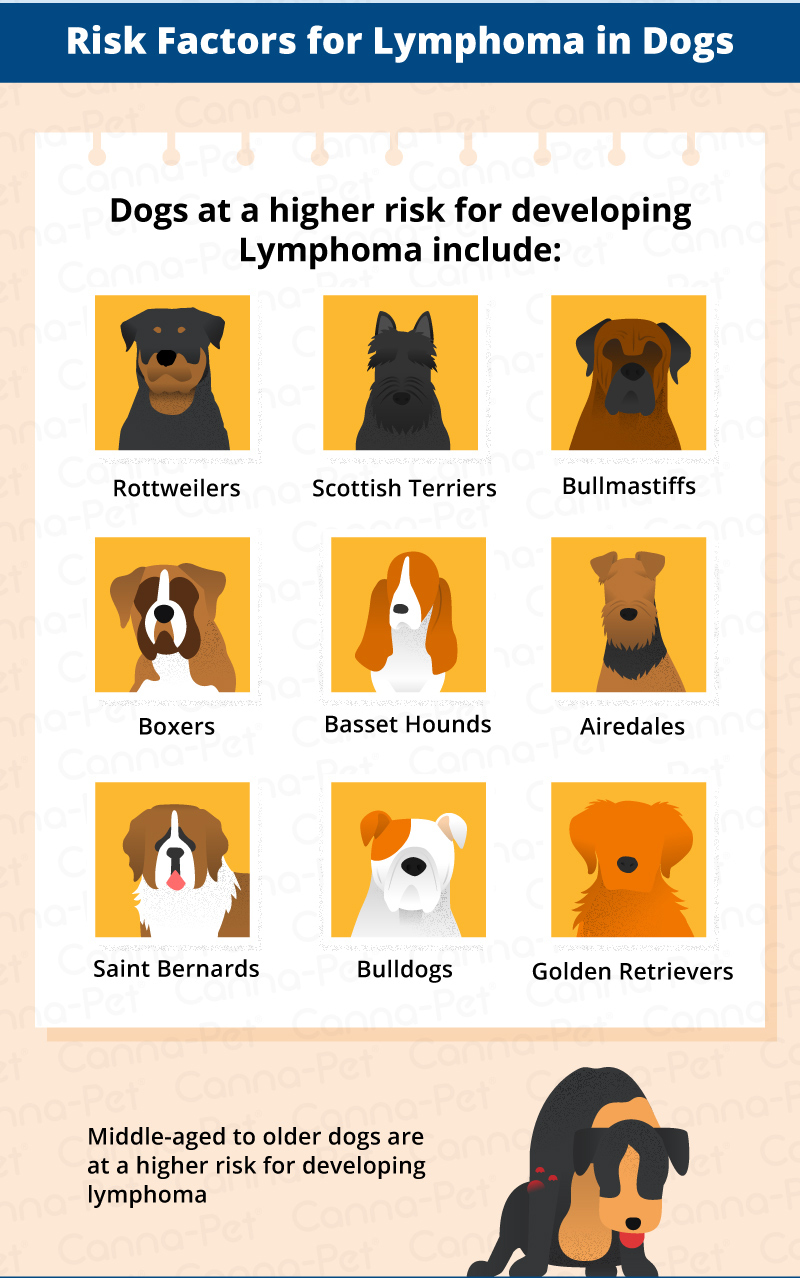Lymphoma In Dogs: Early Signs And Treatment Guide

Lymphoma is a type of cancer that affects the immune system, specifically the lymphocytes, which are a type of white blood cell. In dogs, lymphoma is one of the most common types of cancer, accounting for approximately 10% of all canine cancers. It can occur in any breed, but some breeds, such as Golden Retrievers, Labrador Retrievers, and Boxers, are more prone to developing lymphoma. Early detection and treatment are crucial to improving the prognosis and quality of life for dogs with lymphoma.
Understanding Lymphoma in Dogs

Lymphoma in dogs can be classified into several types, including cutaneous lymphoma, gastrointestinal lymphoma, and multicentric lymphoma. The most common type is multicentric lymphoma, which affects multiple lymph nodes and organs. The exact cause of lymphoma in dogs is unknown, but it is believed to be related to genetic and environmental factors, such as exposure to chemicals and viruses. Dogs with lymphoma may exhibit a range of symptoms, including weight loss, loss of appetite, lethargy, and swelling of the lymph nodes.
Early Signs of Lymphoma in Dogs
Recognizing the early signs of lymphoma in dogs is essential for prompt treatment and improving the prognosis. Some common early signs of lymphoma in dogs include:
- Swelling of the lymph nodes, particularly in the neck, armpits, and groin area
- Weight loss and loss of appetite
- Lethargy and depression
- Difficulty breathing or swallowing
- Abdominal distension or swelling
- Seizures or neurological symptoms
If you notice any of these symptoms in your dog, it is essential to consult with a veterinarian as soon as possible. A physical examination, complete blood count, and imaging tests, such as X-rays or ultrasound, may be performed to diagnose lymphoma.
Treatment Options for Lymphoma in Dogs

The treatment of lymphoma in dogs depends on the type, stage, and severity of the disease. The primary treatment options for lymphoma in dogs include:
| Treatment Option | Description |
|---|---|
| Chemotherapy | A combination of medications to kill cancer cells and slow disease progression |
| Radiation Therapy | High-energy rays to kill cancer cells and shrink tumors |
| Surgery | Removal of affected lymph nodes or tumors |
| Immunotherapy | Stimulation of the immune system to fight cancer cells |

Chemotherapy is the most common treatment for lymphoma in dogs, and it can be administered orally or intravenously. The goal of treatment is to achieve remission, which can be complete or partial. Complete remission means that all signs of cancer have disappeared, while partial remission means that the cancer has decreased in size or severity.
Supportive Care and Management
In addition to primary treatment, supportive care and management are crucial to improving the quality of life for dogs with lymphoma. This includes:
- Appetite stimulation and nutrition management
- Pain management and analgesia
- Anti-nausea and anti-vomiting medication
- Monitoring for infections and managing side effects
A veterinarian can provide guidance on the best supportive care and management strategies for your dog.
Prognosis and Life Expectancy
The prognosis and life expectancy for dogs with lymphoma vary depending on the type, stage, and response to treatment. Generally, dogs with multicentric lymphoma have a poorer prognosis than those with cutaneous or gastrointestinal lymphoma. With chemotherapy, the median survival time for dogs with lymphoma is approximately 6-12 months, while some dogs may live for up to 2 years or more with proper treatment and management.
Future Implications and Research
Research is ongoing to improve the diagnosis, treatment, and management of lymphoma in dogs. New therapies, such as targeted therapy and immunotherapy, are being developed and tested. Additionally, there is a growing interest in the use of alternative and complementary therapies, such as acupuncture and herbal supplements, to support dogs with lymphoma.
What are the common signs of lymphoma in dogs?
+Common signs of lymphoma in dogs include swelling of the lymph nodes, weight loss, loss of appetite, lethargy, and difficulty breathing or swallowing.
How is lymphoma diagnosed in dogs?
+Lymphoma is diagnosed in dogs through a physical examination, complete blood count, and imaging tests, such as X-rays or ultrasound. A biopsy may also be performed to confirm the diagnosis.
What is the prognosis for dogs with lymphoma?
+The prognosis for dogs with lymphoma varies depending on the type, stage, and response to treatment. Generally, dogs with multicentric lymphoma have a poorer prognosis than those with cutaneous or gastrointestinal lymphoma. With chemotherapy, the median survival time for dogs with lymphoma is approximately 6-12 months.



